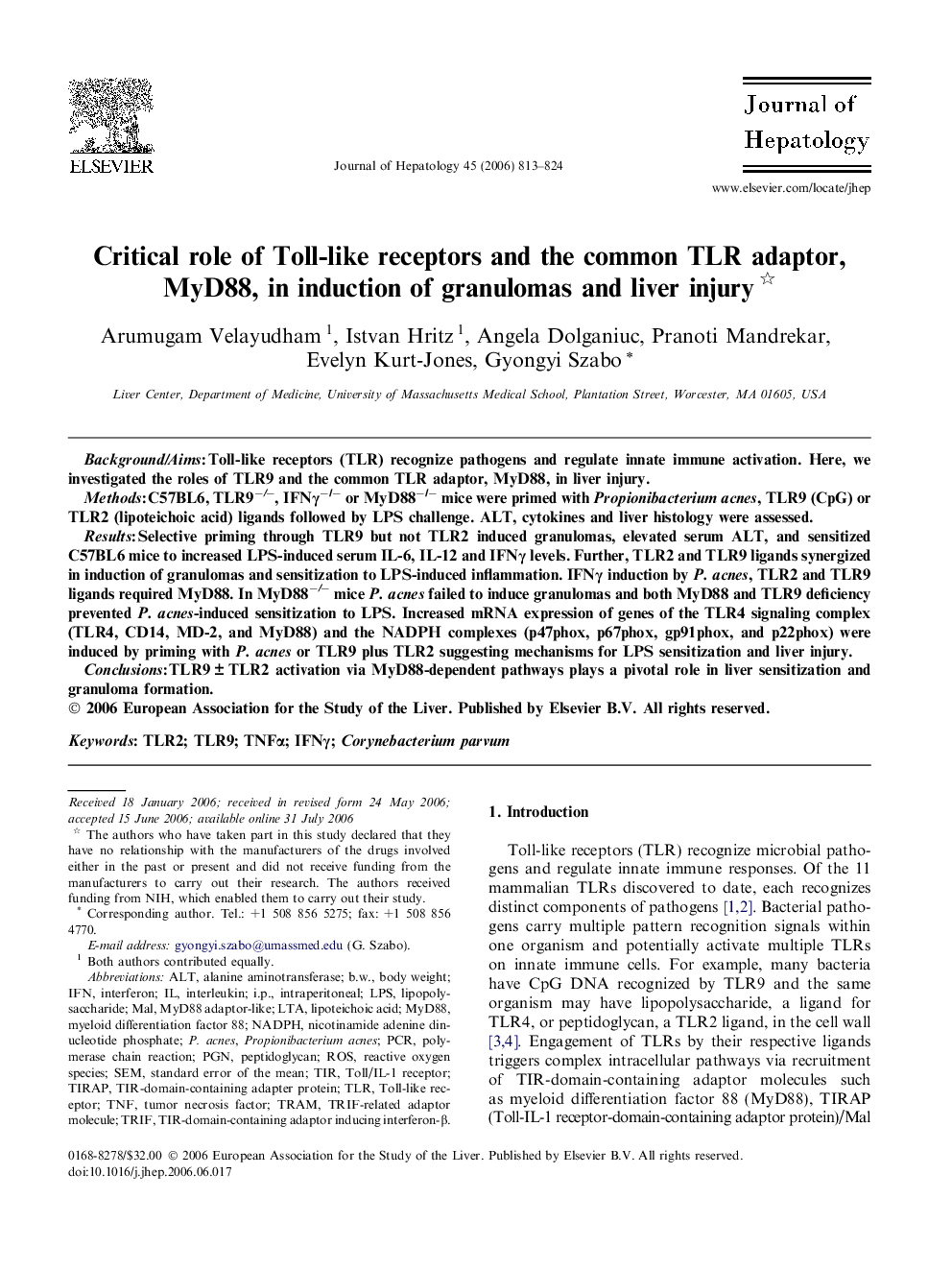| Article ID | Journal | Published Year | Pages | File Type |
|---|---|---|---|---|
| 3315586 | Journal of Hepatology | 2006 | 12 Pages |
Background/AimsToll-like receptors (TLR) recognize pathogens and regulate innate immune activation. Here, we investigated the roles of TLR9 and the common TLR adaptor, MyD88, in liver injury.MethodsC57BL6, TLR9−/−, IFNγ−/− or MyD88−/− mice were primed with Propionibacterium acnes, TLR9 (CpG) or TLR2 (lipoteichoic acid) ligands followed by LPS challenge. ALT, cytokines and liver histology were assessed.ResultsSelective priming through TLR9 but not TLR2 induced granulomas, elevated serum ALT, and sensitized C57BL6 mice to increased LPS-induced serum IL-6, IL-12 and IFNγ levels. Further, TLR2 and TLR9 ligands synergized in induction of granulomas and sensitization to LPS-induced inflammation. IFNγ induction by P. acnes, TLR2 and TLR9 ligands required MyD88. In MyD88−/− mice P. acnes failed to induce granulomas and both MyD88 and TLR9 deficiency prevented P. acnes-induced sensitization to LPS. Increased mRNA expression of genes of the TLR4 signaling complex (TLR4, CD14, MD-2, and MyD88) and the NADPH complexes (p47phox, p67phox, gp91phox, and p22phox) was induced by priming with P. acnes or TLR9 plus TLR2 suggesting mechanisms for LPS sensitization and liver injury.ConclusionsTLR9 ± TLR2 activation via MyD88-dependent pathways plays a pivotal role in liver sensitization and granuloma formation.
